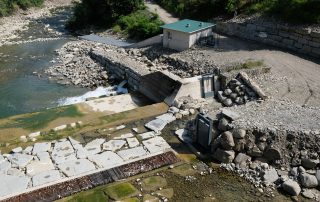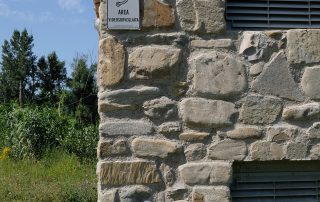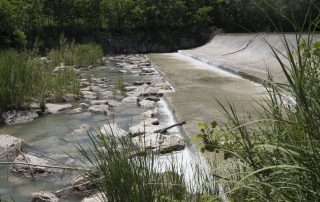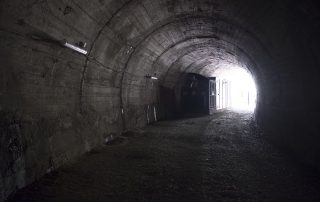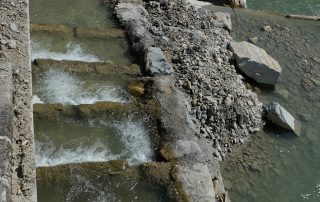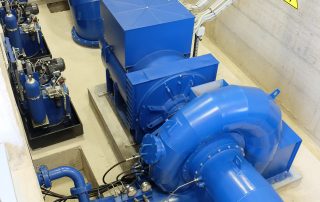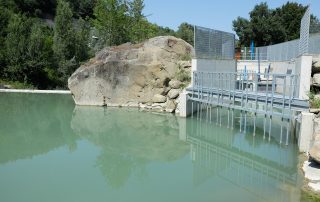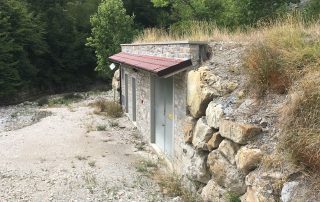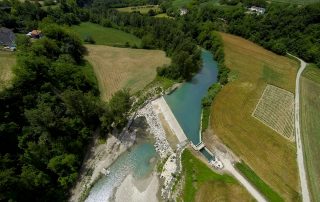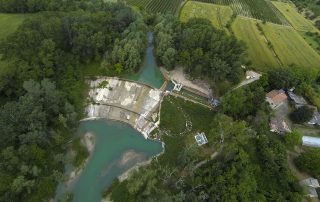Progettiamo impianti idroelettrici di piccole e medie dimensioni (da 10 kW a 5MW) idonei per piccole comunità, industrie, o per contribuire alla generazione distribuita di elettricità nella rete nazionale.
La progettazione degli impianti è finalizzata alla minimizzazione degli impatti ambientali ed alla soluzione delle problematiche idrauliche, tecniche al fine di ottenere impianti economicamente remunerativi.
I progettisti di GECOsistema hanno oltre 15 anni di consolidata esperienza sul campo e un ampio ventaglio di soluzioni progettuali messe in campo su impianti da 10 kW fino oltre 1 MW
Adottiamo un approccio olistico nella progettazione degli impianti grazie al nostro network in grado di affrontare tutti gli aspetti critici nello sviluppo di un impianto idroelettrico tra cui:
- Progettazione delle opere
- Studi Idrologici per la stima della producibilità
- Analisi della fattibilità tecnica ed economica
- rilievi e monitoraggi in sito (topografia e acustica)
- valutazione del rischio idraulico
- Studi di Impatto Ambientale e procedure autorizzative (VIA, AU, etc)
The purpose of the assessment is to ensure that decision makers consider the environmental impacts when deciding whether or not to proceed with a project. The International Association for Impact Assessment (IAIA) defines an environmental impact assessment as “the process of identifying, predicting, evaluating and mitigating the biophysical, social, and other relevant effects of development proposals prior to major decisions being taken and commitments made.”[1]
EIAs are unique in that they do not require adherence to a predetermined environmental outcome, but rather they require decision makers to account for environmental values in their decisions and to justify those decisions in light of detailed environmental studies and public comments on the potential environmental impacts.
Strategic environmental assessment (SEA) is a systematic decision support process, aiming to ensure that environmental and possibly other sustainability aspects are considered effectively in policy, plan and programme making. In this context, following Fischer (2007)[1] SEA may be seen as:
- a structured, rigorous, participative, open and transparent environmental impact assessment (EIA) based process, applied particularly to plans and programmes, prepared by public planning authorities and at times private bodies,
- a participative, open and transparent,possibly non-EIA-based process, applied in a more flexible manner to policies, prepared by public planning authorities and at times private bodies, or
- a flexible non-EIA based process,applied to legislative proposals and other policies, plans and programmes in political/cabinet decision-making.
Effective SEA works within a structured and tiered decision framework,aiming to support more effective and efficient decision-making for sustainable development and improved governance by providing for a substantive focus regarding questions, issues and alternatives to be considered in policy, plan and programme(PPP) making.
SEA is an evidence-based instrument, aiming to add scientific rigour to PPP making, by using suitable assessment methods and techniques.
From 2005-2007, the effect of the directive was assessed. In 2010, a revised wording was published, integrated with 6 other European directives regulating large industrial sites, into the Industrial Emissions Directive, short IED.
PHOTOGALLERY
MORE RESOURCES
Guide on How to Develop a Small Hydropower Plant by ESHA:
DOWNLOAD “Guide on how to develop a small hydropower plant – Part 1
DOWNLOAD “Guide on how to develop a small hydropower plant – Part 2


